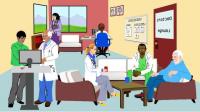You are only seeing posts authors requested be public.
Register and Login to participate in discussions with colleagues.
Canadian News
L. Ian MacDonald: Is it time to set term limits on our prime ministers?
Canada has a history of long tenure in office by Liberal prime ministers. Sir Wilfrid Laurier served four consecutive terms as PM from 1896-1911. Read More
Categories: Canadian News
Brownstein: Werner Herzog shines a light on young Montreal director
Montreal director Harley Chamandy was just 22 when he began shooting his debut feature film, Allen Sunshine, two years ago. Little could he have dreamed when filming began on his next-to-no-budget movie — made for under $400,000 — in the Eastern Townships community of Georgeville that the finished product would capture the attention and imagination of one of the world’s most iconic directors, Werner Herzog (Aguirre, the Wrath of God; Heart of Glass; Stroszek; Fitzcarraldo, among his 60-plus credits). Read More
Categories: Canadian News




